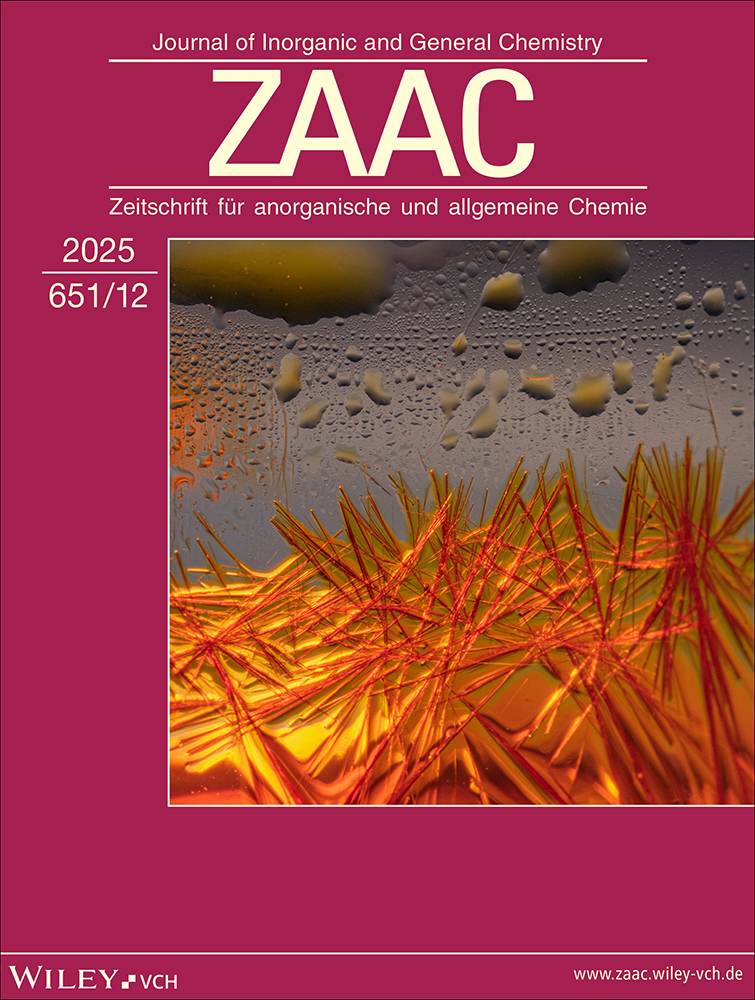Synthese und Struktur des μ-Sulfido-μ-disulfido-octabromodiwolframat(V)-Ions [W2S3Br8]2−
Abstract
deWolframhexabromid reagiert mit H2S in Dichlormethan zu einem braunen Produkt, aus dem durch Zugabe von Tetraphenylphosphoniumbromid in CH2Cl2 das kristalline, braune (PPh4)2[Br4W(μ-S)(μ-S2)WBr4]. CH2Cl2 · H2S entsteht. Sein IR-Spektrum wird mitgeteilt, seine Kristallstruktur wurde mittels Röntgenbeugung aufgeklärt (2330 unabhängige, beobachtete Reflexe, R = 9,7%). Kristalldaten: rhombisch, Pnma, a = 1 766,5, b = 2 412,7, c = 1 416,3 pm, Z = 4. Im diamagnetischen [W2S3Br8]2−-Ion sind die beiden W-Atome über eine Sulfido- und ein Disulfidobrücke sowie durch eine WW-Bindung miteinander verknüpft.
Abstract
enSynthesis and Structure of μ-Sulfido-μ-disulfido-octabromoditungstate(V), [W2S3Br8]−2
Tungsten hexabromide reacts with H2S in dichloromethane yielding a brown product which, by addition of tetraphenylphosphonium bromide in CH2Cl2, is converted to brown, crystalline (PPh4)2[Br4W(μ-S)(μ-S2)WBr4] · CH2Cl2 · CH2S. Its IR spectrum is reported, its crystal structure was determined by X-ray diffraction (2330 reflexions, R = 0.097). Crystal data: orthorhombic, Pnma, a = 1 766.5, b = 2 412.7, c = 1 416.3 pm, Z = 4. In the diamagnetic [W2S3Br8]2− ions the two W atoms are linked via a sulfido and a disulfido bridge and by a WW bond.




